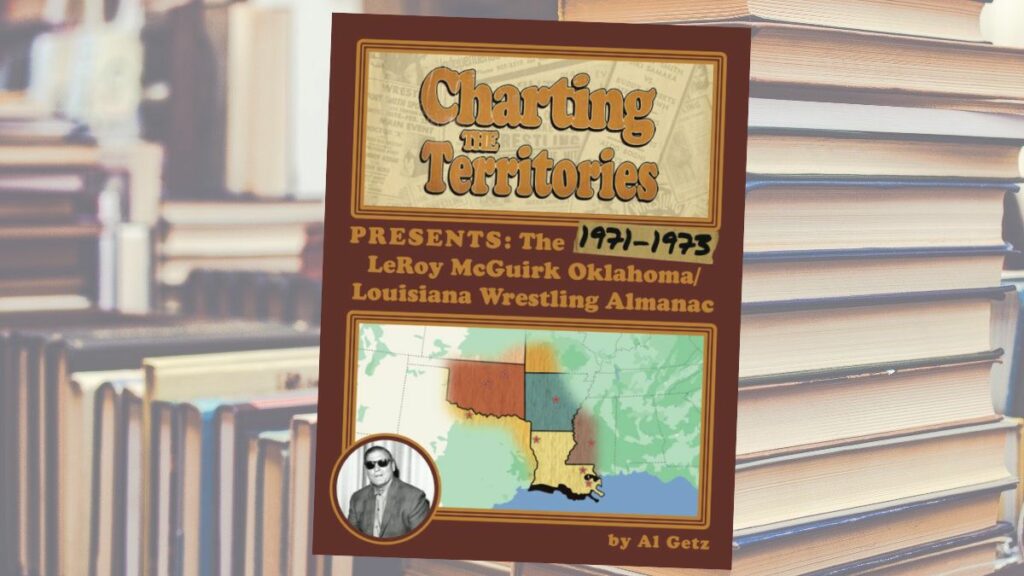As a 12-year-old kid, my first glimpse of professional wrestling came with weekly editions of WWE (then WWF) Monday Night Raw and Thursday Night Smackdown in the late 1990s. I was immediately hooked, and just as immediate was my need to consume even more. Suffice to say, two nights a week was not enough to satiate my ravenous teenage desire for pro wrestling.
When I look back now, I realize that what really drew me into the business was not just the product, but the history behind it. The championships, the rivalries, the men and women who came before… there was so much that had led to where wrestling was when I first became a fan. I couldn’t get enough. All my free time was spent scavenging for VHS tapes, wrestling almanacs and anything else I could get my hands on. I very quickly wanted to become an expert on all thing wrestling, and even quicker realized how large a task that would be. Bill Apter or Jim Cornette I was not, but I endeavored to know as much as they did.
Now at age 35, I find myself pursuing that same ambition. Even with the vast resources of the internet and social media at my disposal, it’s still a task to get your hands on all the information you could want to become a self-appointed wrestling historian, especially for promotions before the 1980s.
So, when J Spade, a pro wrestler from my home promotion of WildKat Sports in New Orleans, suggested I review a wrestling book for SlamWrestling.net, I jumped at the opportunity. Once I was briefed on its contents: a chronicling of a prolific promotion in the same area as my own but during the early 1970s, I salivated, though attempted to temper my expectations. I wasn’t sure how in depth the proposed book would dive into the history it proposed. Boy, how unnecessary would that tempering turn out to be.
Charting The Territories endeavored to just what the title would suggest: chronicle and document the territories of professional wrestling. This was one chapter in the quest of Al Getz, the author of the book for this review: Charting the Territories Presents: The 1971-1973 LeRoy McGuirk Oklahoma/Louisiana Wrestling Almanac.
What was clear right away was the passion and effort Getz, a former wrestling manager on the independent circuit in the ’90s, shared with myself and so many others for the wrestling business. “My goal when I first started Charting the Territories was not only to learn as much as possible about wrestling history, but to document it so others could learn as well.” Now that I knew I was on the same page as Getz (no pun intended), I dived deep into the 200+ page almanac that was delightfully more in depth than I could asked. My first question was: Who is Leroy McGuirk? What had I gotten myself into?
In Charting The Territories, Getz presents a deep dive into the history of McGuirk and his territories in the US south, focusing on the years of 1971 through 1973. What was refreshing was not only the vast detail of information presented about the promotion, but the efforts Getz went to introduce you to his system, to McGuirk and to the promotion. An effort that this novice greatly appreciated.
The Oklahoma/Louisiana territory is often referred to by other sources as the “Tri-State Wrestling” territory, but Getz notes there’s no evidence of use by that name until the fall of 1979, thus referring to it here by the promoter LeRoy McGuirk. McGuirk promoted events in those two states, as well as in Arkansas, Texas and even southern Kansas. While McGuirk was the principal owner of the territory, others were involved as well, notably head attraction Bill Watts, as well as Danny Hodge, Verne Gagne and Fritz Von Erich.

Al Getz
Getz uses an innovative ranking of the roster, utilizing a series of visual measurements for each wrestler’s spot on the card, their consistency of booking and feuds in the territory. The SPOT rating is particularly noteworthy for showing where a wrestler falls both from a fan’s perspective as well as from where they fall in the booking of the promoter. This system makes the chronicling of the promotion’s roster fun and easy to comprehend even from a newcomer to the promotion. Getz utilizes this format to profile each wrestler who appeared for the promotion during the 1971-1973 period, from top stars like Watts, Hodge, Dusty Rhodes and Doctor X to preliminary competitors like Ronnie Paul and a young Bob Backlund. The almanac goes one further still, showing the rivalries each combatant was enthralled in throughout the three-year period, listing the frequency of times wrestlers competed against one another.
While many almanacs simply list the house results for each recorded event (and make no mistake, this piece does that as well in spades) this edition of Charting the Territories goes above and beyond with the details on the Oklahoma/Louisiana territory of 1971 to 1973. It’s a delightful read with the potency of a textbook but clearly written with the love and passion of a fan of the pro wrestling business. Getz knows his stuff, and it shows. There’s even more on his website, ChartingTheTerritories.com and the accompanying podcast.
“My records are not complete, but they are more complete (and accurate) than any other source. That’s a bold statement, but it’s a true statement,” Getz wrote confidently. His work certainly shows. An essential work for any pro wrestling historian. Highly recommended.
RELATED LINKS
- Nov. 29, 2024: Book excerpt: Luther Lindsay in the spotlight
- July 11, 2024: Al Getz managed a complicated journey to Melby Award
- Jan. 7, 2024: What goes into my ‘Charting the Territories’ books
- Buy Charting the Territories Presents: The 1971-1973 LeRoy McGuirk Oklahoma/Louisiana Wrestling Almanac at Amazon.com or Amazon.ca
- chartingtheterritories.com
- SlamWrestling Master Book List
